
Obsessed With Learning
Helping Teachers Get Their Lives Back


How to Write a Biography: Upper Elementary to Middle School
Writing a biography can be a daunting task. When students hear the assignment of writing a biography, they may have thoughts of long, boring essays or a tedious 10-page book report. There are various ways to tackle writing a biography, and they can even be fun in the process! Let’s look at some less intimidating ways to get your kiddos to write a biography, whether in elementary or middle school.

Step 1: Read a Biography
The first step for students before writing a biography is to read one. They need to see a real-life example before tackling their own biography assignment. Elementary students can read biography picture books or Who Was? biography novels. Biography picture books are especially interesting to students as the splendid pictures bring the person to life.
Here are some picture books we recommend for younger students:
I Am Rosa Parks by Brad Meltzer
The Girl Who Thought in Pictures by Julia Finley Mosca
On a Beam of Light: A Story of Albert Einstein by Jennifer Berne
Upper elementary students love the Who Was? novel series. These books are more challenging, contain some pictures, and are age-appropriate. We recommend:
Who Was? Anne Frank by Anne Abramson
Who Were? The Tuskegee Airmen by Sherri L. Smith
Who Was? Selena by Max Bisantz
Middle school-aged students can read a variety of biographies from sixth graders reading Who Was? to advanced readers conquering even adult biographies. Some biographies or autobiographies my middle school students have read and loved are:
I Am Malala by Malala Youfsazai
Gifted Hands The Ben Carson Story by Gregg Lewis
Life in Motion: An Unlikely Ballerina by Misty Copeland
Step 2: Research a Person
Once students have read a biography to gain an understanding of what one looks like and how it is organized, as well as more about the person they are learning about, they can complete research from the biography or autobiography. A simple graphic organizer to help students organize crucial information would suffice. Important information that the student should gather from their book includes:
- Birthdate and Birthplace
- Death Date and Place If Deceased
- Childhood/Family
- Adult Family
- Major Accomplishments
- Major Obstacles
- Lessons we can learn from this person’s life
Step 3: How to Write a Biography Tips
As a teacher, you can provide choices for students or provide a project students can tackle. Some biography projects require students to write a biography in a different format than a typical essay.
Paper Bag Biography
For elementary grades, a paper bag biography book report is an interesting way to create a biography. Once students have read their biography or autobiography, they color the front of the paper bag with a picture of the person as well as display the person’s name. On the back of the paper bag is written the major accomplishments, obstacles, and a lesson learned from this person’s life.
On one side of the bag is written fun facts and on the other side is written basic information such as birthdate, birthplace, family, death date, etc. Inside the paper bag, students place varying objects that symbolize the life of the person and explain or write about them.
Cereal Box Biography
This same concept can be completed with a cereal box. Students would utilize construction paper and glue over the cereal box instead. They can create a cute name for their cereal that coincides with the person they’re learning about as well. For instance, a biography about Sugar Ray Leonard, a professional boxer, could become Sugar Rays on a cereal box biography report.
Pizza Box Biography
Speaking of food, a pizza box biography report is something I have utilized for years in the classroom. It combines creativity, art, and writing to display a biography. A simple Google search can give you tons of templates, instructions, and student sample pictures to choose from. I’m not certain of the original creator of this project, but it is amazing!
Students decorate the outside and inside cover of a pizza box with pictures and facts of their person. Next, they create a pizza out of construction paper and each slice displays important information. They can use their creativity to decorate each slice with toppings. Some students create a flap that goes over their slice of information and on the flap are toppings they’ve drawn such as mushrooms, pepperoni, and peppers. I am always impressed with how students use their creativity to design elaborate pizzas!
Here is the link to a FREE pizza box biography book report guideline I have used for years.

Biography in a Can
Keeping with the theme of biography projects centered around food containers, have your students grab a clean chip or coffee can (with a lid). After reading a biography, students will decorate their can based on whom they’re learning about. We recommend the Who Is? , Who Was? and I Am books for this.
Next, students will use a graphic organizer to gather information from their book and then turn that research into an index card biography report. The various index cards are then stored inside the can for easy access for presentations. This project promotes independent student research, incorporates art, and is plain fun. It is definitely engaging for students.
Grab the whole project, including graphic organizers , index card templates , a pre-design sheet , and a rubric below.

Grab your Biography Research Project today.
Our Biography Research Project will guide your students through Biography Research with ease. In addition, this unique research project helps them to learn more about important figures, as well as write and create some awesome biographies.
Bonus: Our Biography Research Project is a great way to display your students’ work for the admiration of parents, admin, and fellow students. Your class will be the envy of your school.
MLA Biography Essa y
As students move into seventh and eighth grade, there is a huge focus on learning to write an MLA essay. Because of this, I require students to write a biography essay or book report. Using a detailed template, students write their biographies. Each paragraph is thoroughly explained and chunked to display the life of the person they’re investigating. Here is a simple template of how I have seventh-grade students organize their biography essays:
1st paragraph contains:
Title of your biography and the author’s name. The book is a biography of __________, who was born on (Date) ______________ in (Birthplace) ____________________. Why did you choose to read this book? Write a brief summary of their well-known accomplishments.
2nd, 3rd, 4th Paragraph contains:
A summary of their life. Make sure their life is in sequence. Tell of major life accomplishments, major disappointments, and major obstacles they faced. Tell of their childhood, adulthood, etc.
5th Paragraph contains:
What is the most interesting fact about this person? Explain why. How would you describe this person? If you could meet your person, what questions would you ask him or her? Why? Would you recommend this biography to a friend? Why or why not?
6th Paragraph: Conclusion Paragraph
What are the major life lessons a reader can learn from this person’s life?
Step 4: Publish through Technology
Students can create biography presentations by using Google Slides , all the while utilizing pictures, quotes, and thematic decor to make their project come to life. Slidesgo.com is an amazing template resource in which students can make their presentations fit a theme and be a bit more aesthetically pleasing and exciting.
Furthermore, Canva has a plethora of resources students can use to create biographies, from a standard presentation to infographics to creating an eBook . Canva is an awesome resource. It contains varying fonts, pre-loaded graphics, and the ability to upload pictures online. Canva has become a favorite tool of our students here lately!
Writing a biography can be challenging but in a great way! Reading biographies such as picture books to novels, this readily prepares students to conquer biography writing. By presenting options such as activities or a detailed template for an essay, students can feel interested and ready to tackle the world of biographies.

Share this:
- Click to share on Twitter (Opens in new window)
- Click to share on Facebook (Opens in new window)
- Click to share on Pinterest (Opens in new window)
Leave a Reply Cancel reply
Discover more from obsessed with learning.
Subscribe now to keep reading and get access to the full archive.
Type your email…
Continue reading
You must be logged in to post a comment.
The Joy of Teaching
Sharing creative ideas and lessons to help children learn.

6 Steps to Teach Students How to Write a Biography
February 8, 2024 by Evan-Moor | 0 comments
Biographies are a key genre in storytelling. We wouldn’t know as much about Albert Einstein, Maya Angelou, Abraham Lincoln, or Mother Teresa if it weren’t for biographies! Even in our day-to-day lives, we share biographies when talking about other people, famous or not. A biography gives important information about a person’s life and describes major events in the order in which they happened.
Informational Writing and Biographies
Reading biographies is a critical part of learning in all school subjects; however, learning how to write biographies is just as imperative. Biographies are a type of informational writing or writing that aims to explain a topic to a reader. An informational text is not always about a person like a biography; an informational text might be about animals, science experiments, or historical events. Learning how to do informational writing is special, as kids can then effectively communicate what they learn to others. When studying informational writing, children learn skills such as research, note-taking, and organizing facts. More specifically, writing biographies teaches children how to recount history, think chronologically, identify major events, synthesize information, and retell stories creatively.
Steps to Teaching Biographies
Introduce a biography and read it together..
The first step in teaching how to write a biography is explaining what a biography is by providing an example of one.
This free Evan-Moor “Writing A Biography” lesson from Nonfiction Writing grade two includes guided instruction and practice activities to help students understand the important elements in a biography.
Download this “Writing a Biography” unit here .

While reading the biography that you selected to share with the children, ask questions such as:
- What is the purpose of the biography?
- Why is this a good biography?
- Does the first sentence say who it is about and why they are important?
- Does the biography provide interesting facts about the person’s life?
- Are the events told in the order in which they occurred?
Integrate biographies into students reading and have them read biographies to classmates to get familiar with the genre.
Find important information.
Remind your students that a biography gives important information about someone. To practice identifying important information, read a biography and ask the questions:
- Who is the biography about?
- When and where was this person born?
- What is this person known for?

This nonfiction reading unit from Reading Comprehension: Nonfiction tells the story of Benjamin Banneker and how his scientific accomplishments helped to change attitudes about African Americans. It includes close reading activities to guide students in identifying important information.
Download these free printables here .

Choose good details.
Not all information about a person is needed in a biography. Some facts are more important than others, which is why children should learn to choose only the necessary details. One way to teach children how to choose good details is to check in with them when reading a biography and ask:
- Are these details important?
- Which details are not important?
Write a good beginning.
A good beginning of a biography includes who the biography is about and why the person is important. This should appear in the very first sentence of the biography. Have students practice writing first sentences of biographies with two pieces of information: a name and why the person is important.
Organize a biography.
Biographies are organized chronologically. For the children to practice identifying events in the order in which they happened, have the kids numerically order a list of events and then turn the events into full sentences. You can even encourage the children to draw out a timeline.
Review and edit a biography.
The final step in teaching children to write a biography is to have them review a biography, pinpointing what was done well or what could be improved. After reading a biography together, review it by asking the questions:
- Why is the person important?
- Does the very first sentence tell us who the person is and why they are important?
- Are the details in chronological order?
- What details are not important in the biography and can be excluded?
Introduce young minds to a wide range of remarkable people who have shaped our world. This close reading and research process not only helps young learners discover the lives of historical figures but also nurtures their reading, research, and critical thinking skills.
Want to receive our alerts on our latest posts? Don’t forget to subscribe!

Leave a Reply Cancel reply
Subscribe Today!
Sign-up for education inspiration for PreK–8 teachers and parents.
Email address:
Grade Level Pre-K Kindergarten 1st Grade 2nd Grade 3rd Grade 4th Grade 5th Grade 6th Grade 7th Grade +
I am a ... Teacher Homeschooler Parent School Admin Other
By submitting this form, you are consenting to receive emails from Evan-Moor. You can unsubscribe at any time by using the Unsubscribe link found at the bottom of every email.

How to Write a Biography
Biographies are big business. Whether in book form or Hollywood biopics, the lives of the famous and sometimes not-so-famous fascinate us.
While it’s true that most biographies are about people who are in the public eye, sometimes the subject is less well-known. Primarily, though, famous or not, the person who is written about has led an incredible life.
In this article, we will explain biography writing in detail for teachers and students so they can create their own.
While your students will most likely have a basic understanding of a biography, it’s worth taking a little time before they put pen to paper to tease out a crystal-clear definition of one.
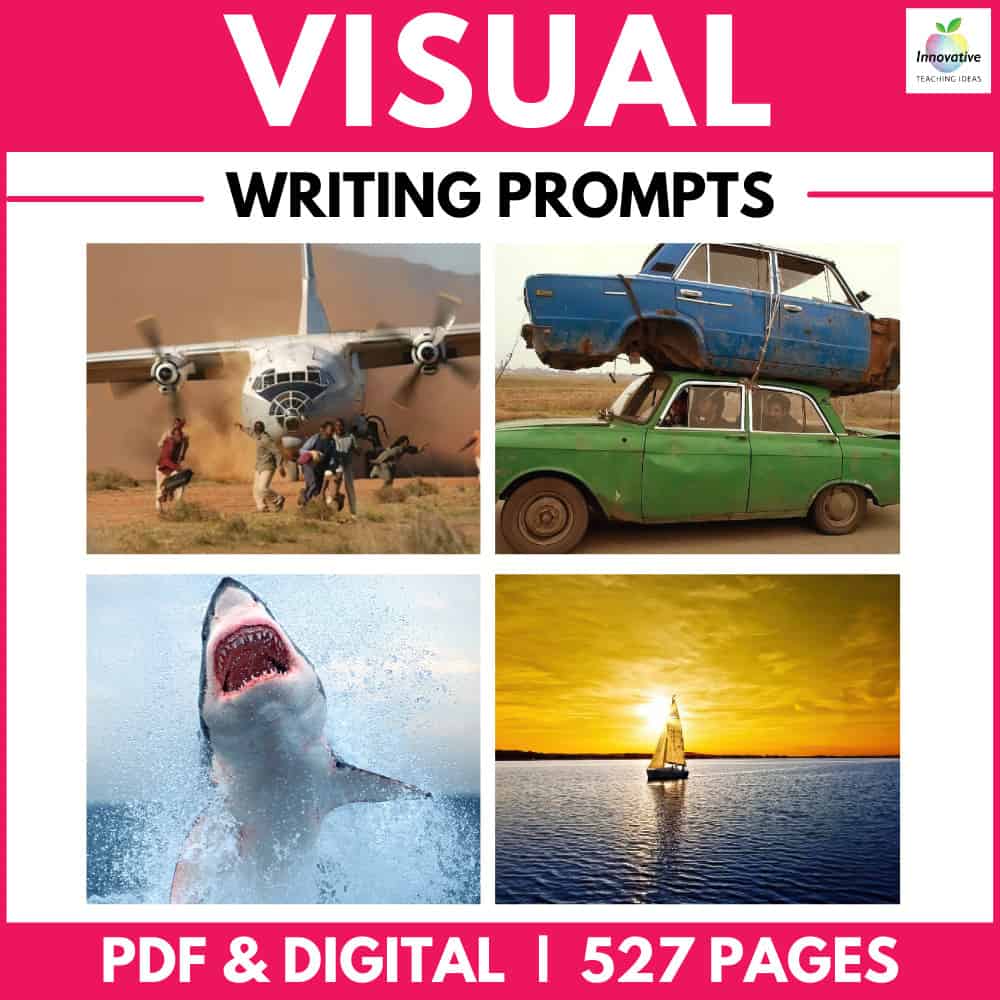
What Is a Biography?

A biography is an account of someone’s life written by someone else . While there is a genre known as a fictional biography, for the most part, biographies are, by definition, nonfiction.
Generally speaking, biographies provide an account of the subject’s life from the earliest days of childhood to the present day or, if the subject is deceased, their death.
The job of a biography is more than just to outline the bare facts of a person’s life.
Rather than just listing the basic details of their upbringing, hobbies, education, work, relationships, and death, a well-written biography should also paint a picture of the subject’s personality and experience of life.
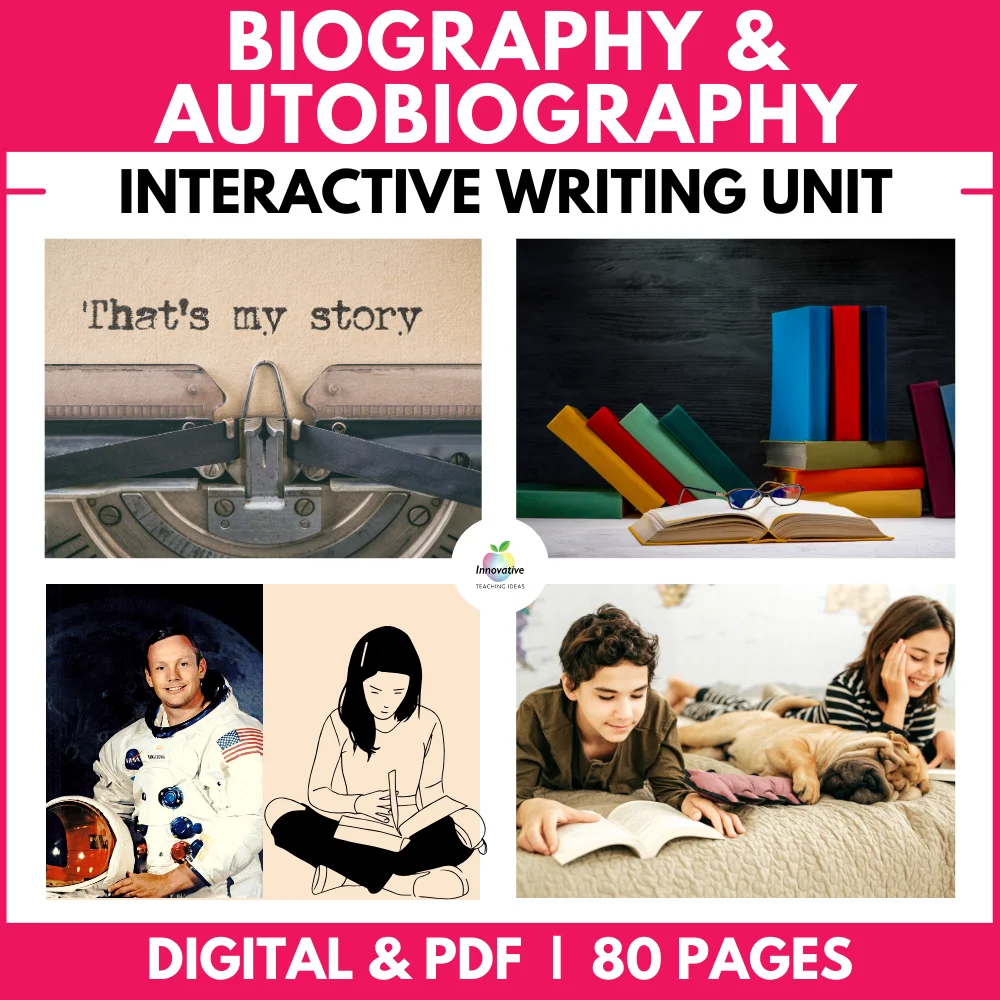
Full Biographies
Teaching unit.
Teach your students everything they need to know about writing an AUTOBIOGRAPHY and a BIOGRAPHY.
⭐⭐⭐⭐⭐ ( 26 reviews )
Features of a Biography
Before students begin writing a biography, they’ll need to have a firm grasp of the main features of a Biography. An excellent way to determine how well they understand these essential elements is to ask them to compile a checklist like the one-blow
Their checklists should contain the items below at a minimum. Be sure to help them fill in any gaps before moving on to the writing process.
The purpose of a biography is to provide an account of someone’s life.
Biography structure.
ORIENTATION (BEGINNING) Open your biography with a strong hook to grab the reader’s attention
SEQUENCING: In most cases, biographies are written in chronological order unless you are a very competent writer consciously trying to break from this trend.
COVER: childhood, upbringing, education, influences, accomplishments, relationships, etc. – everything that helps the reader to understand the person.
CONCLUSION: Wrap your biography up with some details about what the subject is doing now if they are still alive. If they have passed away, make mention of what impact they have made and what their legacy is or will be.
BIOGRAPHY FEATURES
LANGUAGE Use descriptive and figurative language that will paint images inside your audience’s minds as they read. Use time connectives to link events.
PERSPECTIVE Biographies are written from the third person’s perspective.
DETAILS: Give specific details about people, places, events, times, dates, etc. Reflect on how events shaped the subject. You might want to include some relevant photographs with captions. A timeline may also be of use depending upon your subject and what you are trying to convey to your audience.
TENSE Written in the past tense (though ending may shift to the present/future tense)
THE PROCESS OF WRITING A BIOGRAPHY
Like any form of writing, you will find it simple if you have a plan and follow it through. These steps will ensure you cover the essential bases of writing a biography essay.
Firstly, select a subject that inspires you. Someone whose life story resonates with you and whose contribution to society intrigues you. The next step is to conduct thorough research. Engage in extensive reading, explore various sources, watch documentaries, and glean all available information to provide a comprehensive account of the person’s life.
Creating an outline is essential to organize your thoughts and information. The outline should include the person’s early life, education, career, achievements, and any other significant events or contributions. It serves as a map for the writing process, ensuring that all vital information is included.
Your biography should have an engaging introduction that captivates the reader’s attention and provides background information on the person you’re writing about. It should include a thesis statement summarising the biography’s main points.
Writing a biography in chronological order is crucial . You should begin with the person’s early life and move through their career and achievements. This approach clarifies how the person’s life unfolded and how they accomplished their goals.
A biography should be written in a narrative style , capturing the essence of the person’s life through vivid descriptions, anecdotes, and quotes. Avoid dry, factual writing and focus on creating a compelling narrative that engages the reader.
Adding personal insights and opinions can enhance the biography’s overall impact, providing a unique perspective on the person’s achievements, legacy, and impact on society.
Editing and proofreading are vital elements of the writing process. Thoroughly reviewing your biography ensures that the writing is clear, concise, and error-free. You can even request feedback from someone else to ensure that it is engaging and well-written.
Finally, including a bibliography at the end of your biography is essential. It gives credit to the sources that were used during research, such as books, articles, interviews, and websites.
Tips for Writing a Brilliant Biography
Biography writing tip #1: choose your subject wisely.
There are several points for students to reflect on when deciding on a subject for their biography. Let’s take a look at the most essential points to consider when deciding on the subject for a biography:
Interest: To produce a biography will require sustained writing from the student. That’s why students must choose their subject well. After all, a biography is an account of someone’s entire life to date. Students must ensure they choose a subject that will sustain their interest throughout the research, writing, and editing processes.
Merit: Closely related to the previous point, students must consider whether the subject merits the reader’s interest. Aside from pure labors of love, writing should be undertaken with the reader in mind. While producing a biography demands sustained writing from the author, it also demands sustained reading from the reader.
Therefore, students should ask themselves if their chosen subject has had a life worthy of the reader’s interest and the time they’d need to invest in reading their biography.
Information: Is there enough information available on the subject to fuel the writing of an entire biography? While it might be a tempting idea to write about a great-great-grandfather’s experience in the war. There would be enough interest there to sustain the author’s and the reader’s interest, but do you have enough access to information about their early childhood to do the subject justice in the form of a biography?
Biography Writing Tip #2: R esearch ! Research! Research!
While the chances are good that the student already knows quite a bit about the subject they’ve chosen. Chances are 100% that they’ll still need to undertake considerable research to write their biography.
As with many types of writing , research is an essential part of the planning process that shouldn’t be overlooked. If students wish to give as complete an account of their subject’s life as possible, they’ll need to put in the time at the research stage.
An effective way to approach the research process is to:
1. Compile a chronological timeline of the central facts, dates, and events of the subject’s life
2. Compile detailed descriptions of the following personal traits:
- Physical looks
- Character traits
- Values and beliefs
3. Compile some research questions based on different topics to provide a focus for the research:
- Childhood : Where and when were they born? Who were their parents? Who were the other family members? What education did they receive?
- Obstacles: What challenges did they have to overcome? How did these challenges shape them as individuals?
- Legacy: What impact did this person have on the world and/or the people around them?
- Dialogue & Quotes: Dialogue and quotations by and about the subject are a great way to bring color and life to a biography. Students should keep an eagle eye out for the gems that hide amid their sources.
As the student gets deeper into their research, new questions will arise that can further fuel the research process and help to shape the direction the biography will ultimately go in.
Likewise, during the research, themes will often begin to suggest themselves. Exploring these themes is essential to bring depth to biography, but we’ll discuss this later in this article.
Research Skills:
Researching for biography writing is an excellent way for students to hone their research skills in general. Developing good research skills is essential for future academic success. Students will have opportunities to learn how to:
- Gather relevant information
- Evaluate different information sources
- Select suitable information
- Organize information into a text.
Students will have access to print and online information sources, and, in some cases, they may also have access to people who knew or know the subject (e.g. biography of a family member).
These days, much of the research will likely take place online. It’s crucial, therefore, to provide your students with guidance on how to use the internet safely and evaluate online sources for reliability. This is the era of ‘ fake news ’ and misinformation after all!
COMPLETE TEACHING UNIT ON INTERNET RESEARCH SKILLS USING GOOGLE SEARCH
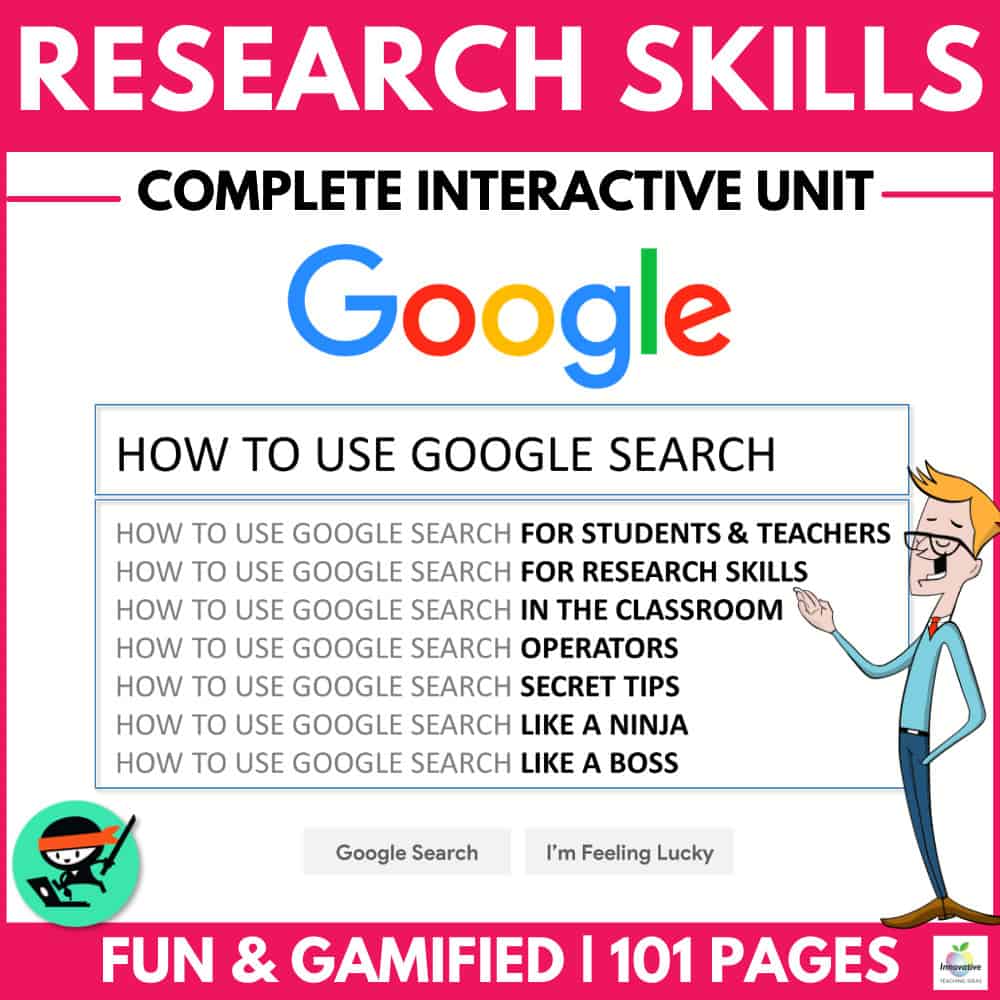
Teach your students ESSENTIAL SKILLS OF THE INFORMATION ERA to become expert DIGITAL RESEARCHERS.
⭐How to correctly ask questions to search engines on all devices.
⭐ How to filter and refine your results to find exactly what you want every time.
⭐ Essential Research and critical thinking skills for students.
⭐ Plagiarism, Citing and acknowledging other people’s work.
⭐ How to query, synthesize and record your findings logically.
BIOGRAPHY WRITING Tip #3: Find Your Themes In Biography Writing
Though predominantly a nonfiction genre, the story still plays a significant role in good biography writing. The skills of characterization and plot structuring are transferable here. And, just like in fiction, exploring themes in a biographical work helps connect the personal to the universal. Of course, these shouldn’t be forced; this will make the work seem contrived, and the reader may lose faith in the truthfulness of the account. A biographer needs to gain and maintain the trust of the reader.
Fortunately, themes shouldn’t need to be forced. A life well-lived is full of meaning, and the themes the student writer is looking for will emerge effortlessly from the actions and events of the subject’s life. It’s just a case of learning how to spot them.
One way to identify the themes in a life is to look for recurring events or situations in a person’s life. These should be apparent from the research completed previously. The students should seek to identify these patterns that emerge in the subject’s life. For example, perhaps they’ve had to overcome various obstacles throughout different periods of their life. In that case, the theme of overcoming adversity is present and has been identified.
Usually, a biography has several themes running throughout, so be sure your students work to identify more than one theme in their subject’s life.
BIOGRAPHY WRITING Tip: #4 Put Something of Yourself into the Writing
While the defining feature of a biography is that it gives an account of a person’s life, students must understand that this is not all a biography does. Relating the facts and details of a subject’s life is not enough. The student biographer should not be afraid to share their thoughts and feelings with the reader throughout their account of their subject’s life.
The student can weave some of their personality into the fabric of the text by providing commentary and opinion as they relate the events of the person’s life and the wider social context at the time. Unlike the detached and objective approach we’d expect to find in a history textbook, in a biography, student-writers should communicate their enthusiasm for their subject in their writing.
This makes for a more intimate experience for the reader, as they get a sense of getting to know the author and the subject they are writing about.
Biography Examples For Students
- Year 5 Example
- Year 7 Example
- Year 9 Example
“The Rock ‘n’ Roll King: Elvis Presley”
Elvis Aaron Presley, born on January 8, 1935, was an amazing singer and actor known as the “King of Rock ‘n’ Roll.” Even though he’s been dead for nearly 50 years, I can’t help but be fascinated by his incredible life!
Elvis grew up in Tupelo, Mississippi, in a tiny house with his parents and twin brother. His family didn’t have much money, but they shared a love for music. Little did they know Elvis would become a music legend!
When he was only 11 years old, Elvis got his first guitar. He taught himself to play and loved singing gospel songs. As he got older, he started combining different music styles like country, blues, and gospel to create a whole new sound – that’s Rock ‘n’ Roll!
In 1954, at the age of 19, Elvis recorded his first song, “That’s All Right.” People couldn’t believe how unique and exciting his music was. His famous hip-swinging dance moves also made him a sensation!
Elvis didn’t just rock the music scene; he also starred in movies like “Love Me Tender” and “Jailhouse Rock.” But fame came with challenges. Despite facing ups and downs, Elvis kept spreading happiness through his music.

Tragically, Elvis passed away in 1977, but his music and charisma live on. Even today, people worldwide still enjoy his songs like “Hound Dog” and “Can’t Help Falling in Love.” Elvis Presley’s legacy as the King of Rock ‘n’ Roll will live forever.
Long Live the King: I wish I’d seen him.
Elvis Presley, the Rock ‘n’ Roll legend born on January 8, 1935, is a captivating figure that even a modern-day teen like me can’t help but admire. As I delve into his life, I wish I could have experienced the magic of his live performances.
Growing up in Tupelo, Mississippi, Elvis faced challenges but found solace in music. At 11, he got his first guitar, a symbol of his journey into the world of sound. His fusion of gospel, country, and blues into Rock ‘n’ Roll became a cultural phenomenon.
The thought of being in the audience during his early performances, especially when he recorded “That’s All Right” at 19, sends shivers down my spine. Imagining the crowd’s uproar and feeling the revolutionary energy of that moment is a dream I wish I could have lived.
Elvis wasn’t just a musical prodigy; he was a dynamic performer. His dance moves, the embodiment of rebellion, and his roles in films like “Love Me Tender” and “Jailhouse Rock” made him a true icon.
After watching him on YouTube, I can’t help but feel a little sad that I’ll never witness the King’s live performances. The idea of swaying to “Hound Dog” or being enchanted by “Can’t Help Falling in Love” in person is a missed opportunity. Elvis may have left us in 1977, but he was the king of rock n’ roll. Long live the King!
Elvis Presley: A Teen’s Take on the Rock ‘n’ Roll Icon”
Elvis Presley, born January 8, 1935, was a revolutionary force in the music world, earning his title as the “King of Rock ‘n’ Roll.” Exploring his life, even as a 16-year-old today, I’m captivated by the impact he made.
Hailing from Tupelo, Mississippi, Elvis grew up in humble beginnings, surrounded by the love of his parents and twin brother. It’s inspiring to think that, despite financial challenges, this young man would redefine the music scene.
At 11, Elvis got his first guitar, sparking a self-taught journey into music. His early gospel influences evolved into a unique fusion of country, blues, and gospel, creating the electrifying genre of Rock ‘n’ Roll. In 1954, at only 19, he recorded “That’s All Right,” marking the birth of a musical legend.
Elvis wasn’t just a musical innovator; he was a cultural phenomenon. His rebellious dance moves and magnetic stage presence challenged the norms. He transitioned seamlessly into acting, starring in iconic films like “Love Me Tender” and “Jailhouse Rock.”
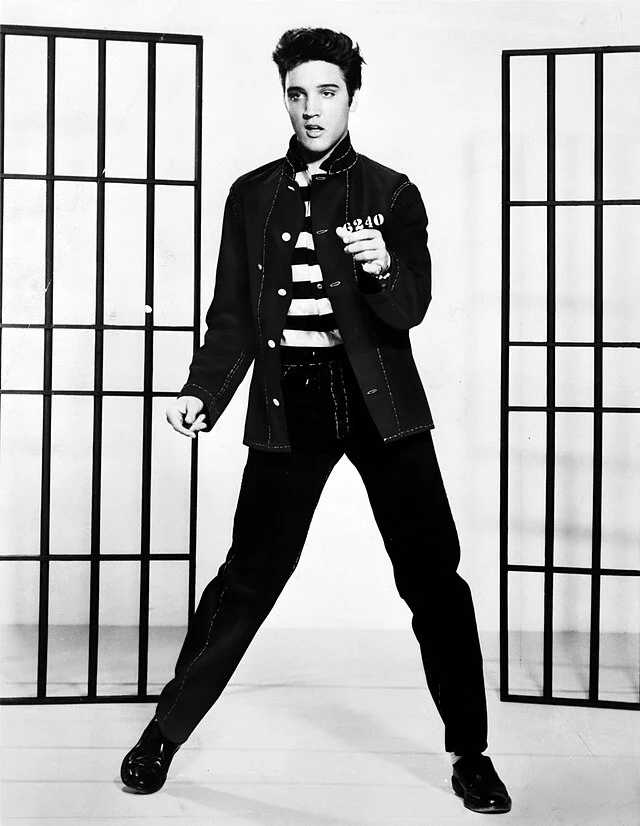
However, fame came at a cost, and Elvis faced personal struggles. Despite the challenges, his music continued to resonate. Even now, classics like “Hound Dog” and “Can’t Help Falling in Love” transcend generations.
Elvis Presley’s impact on music and culture is undeniable. He was known for his unique voice, charismatic persona, and electrifying performances. He sold over one billion records worldwide, making him one of the best-selling solo artists in history. He received numerous awards throughout his career, including three Grammy Awards and the Grammy Lifetime Achievement Award.
Elvis’s influence can still be seen in today’s music. Many contemporary artists, such as Bruno Mars, Lady Gaga, and Justin Timberlake, have cited Elvis as an inspiration. His music continues to be featured in movies, TV shows, and commercials.
Elvis left us in 1977, but his legacy lives on. I appreciate his breaking barriers and fearlessly embracing his artistic vision. Elvis Presley’s impact on music and culture is timeless, a testament to the enduring power of his artistry. His music has inspired generations and will continue to do so for many years to come.
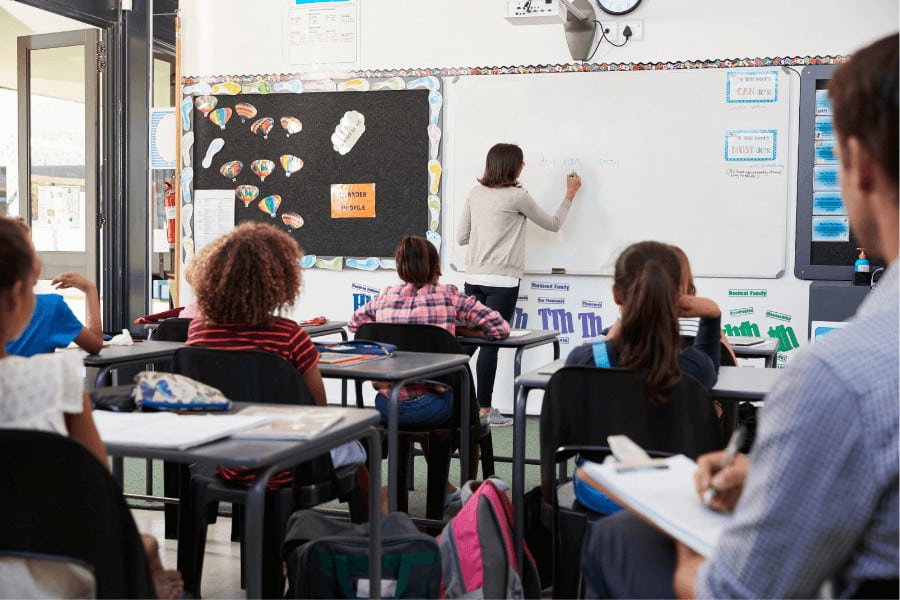
Teaching Resources
Use our resources and tools to improve your student’s writing skills through proven teaching strategies.
BIOGRAPHY WRITING TEACHING IDEAS AND LESSONS
We have compiled a sequence of biography-related lessons or teaching ideas that you can follow as you please. They are straightforward enough for most students to follow without further instruction.
BIOGRAPHY LESSON IDEA # 1:
This session aims to give students a broader understanding of what makes a good biography.
Once your students have compiled a comprehensive checklist of the main features of a biography, allow them to use it to assess some biographies from your school library or on the internet using the feature checklist.
When students have assessed a selection of biographies, take some time as a class to discuss them. You can base the discussion around the following prompts:
- Which biographies covered all the criteria from their checklist?
- Which biographies didn’t?
- Which biography was the most readable in terms of structure?
- Which biography do you think was the least well-structured? How would you improve this?
Looking at how other writers have interpreted the form will help students internalize the necessary criteria before attempting to produce a biography. Once students have a clear understanding of the main features of the biography, they’re ready to begin work on writing a biography.
When the time does come to put pen to paper, be sure they’re armed with the following top tips to help ensure they’re as well prepared as possible.
BIOGRAPHY LESSON IDEA # 2:
This session aims to guide students through the process of selecting the perfect biography subject.
Instruct students to draw up a shortlist of three potential subjects for the biography they’ll write.
Using the three criteria mentioned in the writing guide (Interest, Merit, and Information), students award each potential subject a mark out of 5 for each of the criteria. In this manner, students can select the most suitable subject for their biography.
BIOGRAPHY LESSON IDEA # 3:
This session aims to get students into the researching phase, then prioritise and organise events chronologically.
Students begin by making a timeline of their subject’s life, starting with their birth and ending with their death or the present day. If the student has yet to make a final decision on the subject of their biography, a family member will often serve well for this exercise as a practice exercise.
Students should research and gather the key events of the person’s life, covering each period of their life from when they were a baby, through childhood and adolescence, right up to adulthood and old age. They should then organize these onto a timeline. Students can include photographs with captions if they have them.
They can present these to the class when they have finished their timelines.
BIOGRAPHY LESSON IDEA # 4:
Instruct students to look over their timeline, notes, and other research. Challenge them to identify three patterns that repeat throughout the subject’s life and sort all the related events and incidents into specific categories.
Students should then label each category with a single word. This is the thematic concept or the broad general underlying idea. After that, students should write a sentence or two expressing what the subject’s life ‘says’ about that concept.
This is known as the thematic statement . With the thematic concepts and thematic statements identified, the student now has some substantial ideas to explore that will help bring more profound meaning and wider resonance to their biography.
BIOGRAPHY LESSON IDEA # 5:
Instruct students to write a short objective account of an event in their own life. They can write about anyone from their past. It needn’t be more than a couple of paragraphs, but the writing should be strictly factual, focusing only on the objective details of what happened.
Once they have completed this, it’s time to rewrite the paragraph, but they should include some opinion and personal commentary this time.
The student here aims to inject some color and personality into their writing, to transform a detached, factual account into a warm, engaging story.

A COMPLETE UNIT ON TEACHING BIOGRAPHIES
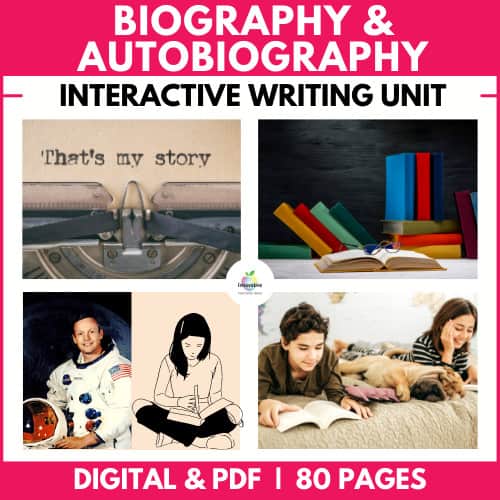
Teach your students to write AMAZING BIOGRAPHIES & AUTOBIOGRAPHIES using proven RESEARCH SKILLS and WRITING STRATEGIES .
- Understand the purpose of both forms of biography.
- Explore the language and perspective of both.
- Prompts and Challenges to engage students in writing a biography.
- Dedicated lessons for both forms of biography.
- Biographical Projects can expand students’ understanding of reading and writing a biography.
- A COMPLETE 82-PAGE UNIT – NO PREPARATION REQUIRED.
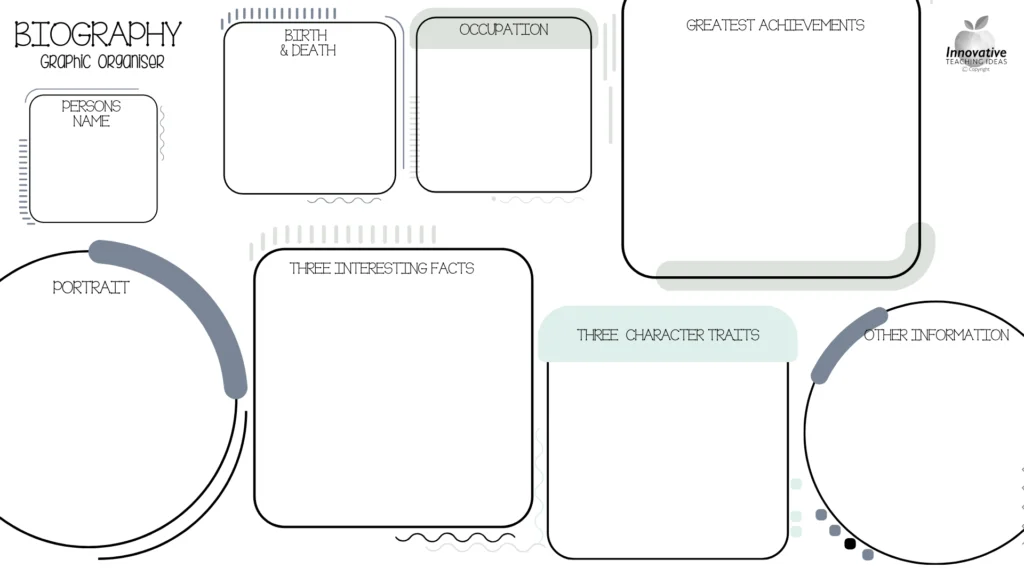
FREE Biography Writing Graphic Organizer
Use this valuable tool in the research and writing phases to keep your students on track and engaged.
WRITING CHECKLIST & RUBRIC BUNDLE

⭐⭐⭐⭐⭐ (92 Reviews)
To Conclude
By this stage, your students should have an excellent technical overview of a biography’s essential elements.
They should be able to choose their subject in light of how interesting and worthy they are, as well as give consideration to the availability of information out there. They should be able to research effectively and identify emerging themes in their research notes. And finally, they should be able to bring some of their personality and uniqueness into their retelling of the life of another.
Remember that writing a biography is not only a great way to develop a student’s writing skills; it can be used in almost all curriculum areas. For example, to find out more about a historical figure in History, to investigate scientific contributions to Science, or to celebrate a hero from everyday life.
Biography is an excellent genre for students to develop their writing skills and to find inspiration in the lives of others in the world around them.
HOW TO WRITE A BIOGRAPHY TUTORIAL VIDEO

OTHER GREAT ARTICLES RELATED TO BIOGRAPHY WRITING

How to write an Autobiography
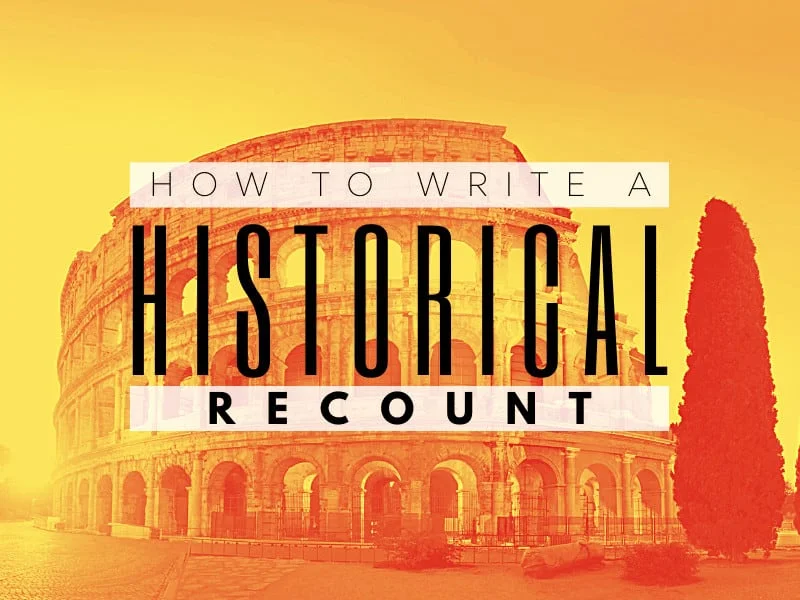
How to Write a Historical Recount Text
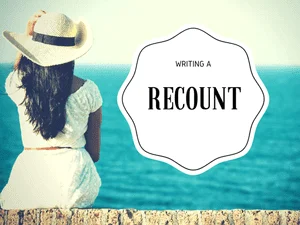
15 Awesome Recount & Personal Narrative Topics
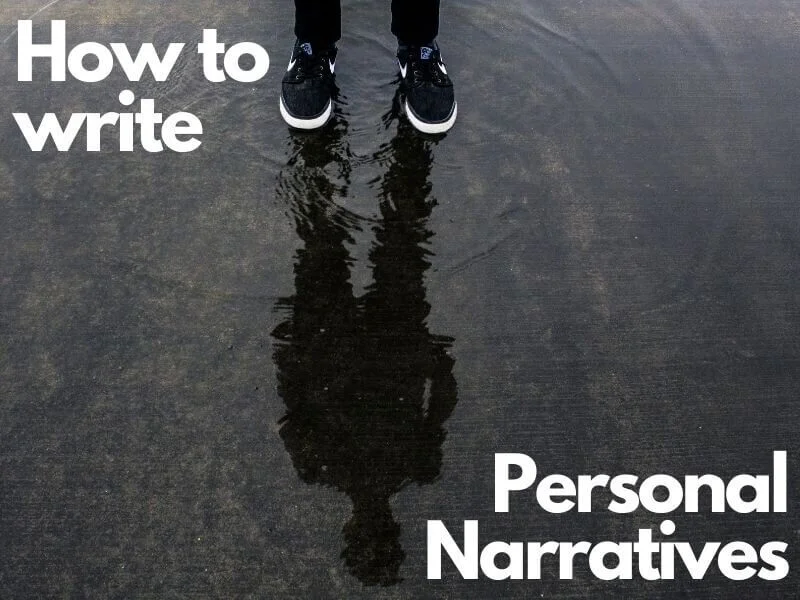
Personal Narrative Writing Guide

- ELEMENTARY TEACHING , INTEGRATED CURRICULUM ACTIVITIES
Teaching Biographies To Elementary Students (Grades 1-5) in 2025
Teaching biographies can feel intimidating at first, but once you have a solid understanding of the genre, a roadmap of how to teach it, and teaching resources and activities, it’s easy! This post will equip you with all of that and more! You’ll feel prepared (and maybe even excited) about teaching biographies (especially if you are using this biography project and these biography activities )!
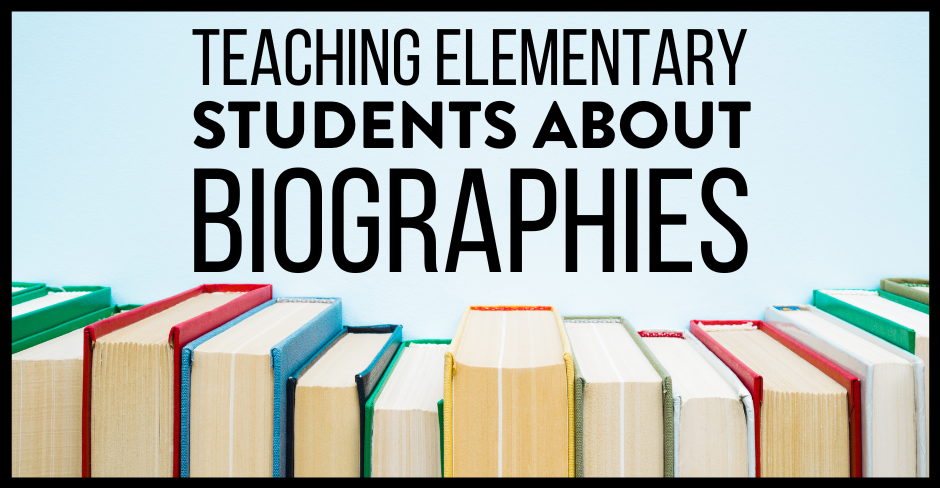
The Benefits Of Students Reading Biographies
There are so many benefits of teaching biographies and autobiographies! Readers are transported into that person’s life. They learn all about the person’s achievements, struggles, culture, life lessons, and personality. Biographies can also teach us about the world through the eyes of the subject while allowing the reader to make connections to them. Most students can find biographies they enjoy when they find people to read about that connect with their likes and dislikes to top it off.
How To Introduce The Biography Genre To Students
The easiest way to introduce and teach biographies is by gathering as many biographies and autobiographies as possible from your classroom library, school, and public library. Make sure that all the books you collect are around your student’s reading levels. This idea works for any theme.
Then, set out the books you collected on each of your students’ tables and have them explore. Ask them to write down what they notice. What do all the books have in common? Have students write down their findings on chart paper.
Next, have each table share with the class what they noticed. They should come up with some ideas like:
- They are all about people.
- The person accomplished something big.
- They all include essential dates or a timeline of the person’s life.
- They included real pictures or illustrations of the person.
- The books all tell factual information, and there are no made-up stories.
Lastly, tell students that books with these characteristics are called biographies or autobiographies. Be sure to tell students the difference between biographies and autobiographies too. Create an anchor chart to hang up for students to reference throughout your biography unit!
4 Ideas For Biography Mini Lessons
After introducing biographies, try one of these mini-lesson ideas for teaching biographies!
- Have students pick a person they are interested in learning more about. Then have them find books about the person and complete a research project about that person to present to the class. You could even take it a few steps further and have students share what they learned in costume as the person they researched in a wax museum activity!
- Have students create a social media page of the person they learned about in their biography
- Have students read about a person of interest, and then write journal entries as that person.
- You could make it seasonal! Around fall, have students paint a pumpkin like a person they read about and present important events or accomplishments as they share their pumpkin. In spring, students could make biography flowers where the center was a photo of the person, and the petals are important events and accomplishments.
Strategies For Using Mentor Texts To Model Reading Biographies
Teaching biographies is simple when you use these strategies!
First, pick any biography or autobiography mentor text and read it aloud. Ok, maybe not ANY. Be sure to choose one that will be engaging to your students. Think about the things they enjoy and go from there. I love picture books because students can generally read them in one session. (Make sure you preview the text first and mark with sticky notes to remember to stop and discuss during the read-aloud!)
Stop at important dates, accomplishments, life lessons, or significant life events to discuss. I even stop to discuss any figurative language or text features included. This will help students with both reading and writing! Students generally have TONS of connections to share during biography read alouds that lead to great conversations.
How To Teach Students To Write Biography Reports
One way to help students learn how to write biographies is to write their first one about themselves! Students can brainstorm what should be included in their biography by creating a timeline that includes important events in their life. Then, they use the timeline to help them write their biography in chronological order. You can model this with a biography about yourself on an anchor chart for students to use if they need help. This is also an excellent way to get to know each other at the beginning of the year!
When it comes to writing biographies about other people, students need to have read several biographies to get an idea of how authors organize this type of writing. When you read aloud, be sure to point out that authors of biographies generally write the story of the person’s life from beginning to end. So students will need to be familiar with sequential order/chronological order text organization. Have students fill in a timeline when you model during read alouds. Point out that biographies usually focus on a part of the person’s life that taught them a life lesson. This biography project and biography activities are great resources for teaching biographies.
Resources for Teaching Biographies
Here are some resources for teaching biography:
1. Biography Project for Elementary Students
Are you looking to begin using a biography project ? Perhaps you are just looking for something better than you already use. If so, this is the resource you need! It is a great resource for teaching elementary students about biographies.
This is a great project to complement a genre study of biographies, an author study, social studies concepts and more. I’ve recently updated the entire product so that it now includes an option to do the Living Biography Museum where families come into school and the students “perform” in character OR can instead be used simply as an independent research project in class or as a homework assignment.
The twist is that instead of having the students dress in costume (which can be a hassle for the parents since most kids can’t put their own costume together) they make a poster board costume with a space for their head to pop through.
A-DOR-ABLE!!!
In the past I’ve done the living museum and had students prepare a brief speech to recite in character. This year I opted to send it home as a homework project and will instead take their photos with their poster board and display them with the written report.
This download now includes BOTH the original version and my new and improved updated version as well. If you have high achieving students who need enrichment this is a perfect activity for them to do on their own or you can use it with an entire class. It’s ideal for grades 2-5.
This biography project contains everything you need to have your students complete a project of their very own to present in class or at a Living Biography Museum.
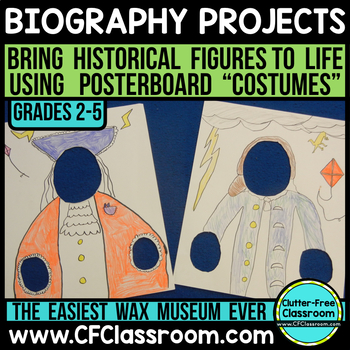
What is included in this biography project?
Make teaching biographies fun by incorporating this biography project , which includes the following:
- Grading rubrics / criteria checklist
- Graphic organizer to plan writing
- Graphic organizer to record sources
- Student writing pages
- Poster board visual directions
5 Reasons Why Teachers Love It
Below are 5 reasons why teachers love using this resource for teaching biographies.
- This comprehensive biography project includes differentiated materials, so all you will be able to meet all of your students’ needs and your they will feel successful.
- The project makes a challenging concept accessible for elementary students.
- This resource facilitates a fun hands-on learning experience that offers opportunities for students to practice important skills without them even realizing it.
- This print and go resource will save you lots of time planning and prepping.
- It is aligned to the Common Core Standards, so it will give you peace of mind knowing your students are practicing important grade level skills.
How to Implement the Project in Your Classroom
You can either do a Living Biography Museum where families come in to school and the students perform in character or it can instead be used simply as an independent research project in class or as a homework assignment.
How I Used the Resources in My Classroom to Teach Biography
We had so much fun making these bio poster boards.
As a bonus, the kids learned a ton.
I started by having them complete oodles of activities from my biography activities packet which acquainted them with a whole bunch of famous folks.
Then I had them work in teams to research Benjamin Franklin. They had discussions about why he was famous. They talked about his accomplishments. Finally, they each wrote about him in the 1st person and performed a monologue as if they were Ben.
To make it oh-so-much-more-fun, I gave them each a poster board to use as a “costume.”
I’m now having them each select their own historical figure of choice to repeat the process as an independent project at home.
I seriously loved this project. The kids did too.
They enjoyed walking around wearing their poster boards and singing, “Who flew a kite in a storm and made history… Ben Franklin Square Pants.”
They also enjoyed having “conversations” with each other while wearing the poster board.
Kid 1: Hey Ben
Kid 2: Yo Ben
Me: **Listening carefully how this conversation is going to go.**
Kid 1: Ben, I really liked how you proved lightning was electricity.
Kid 2: Thanks Ben. You know you’re awesome, right? I mean, you signed the Declaration of Independence and all.
Kid 1: I know dude, right? I totally rock!
And then there was the boy who did a stellar job with his presentation… and then ended it by yelling, “Thank you Philadelphia. Ben Franklin has left the building.”
Third graders make me laugh.
2. Biography Activities for Elementary Students
These biography activities are great resources for teaching biographies to elementary students. It provides teachers with no prep printable biography activities that can be used over and over when studying any person.
This unit was designed to enhance the study of individuals. The activities can be used as part of a genre study or within the content areas. I have also used them with author studies and have had the children complete them as autobiographies about themselves.
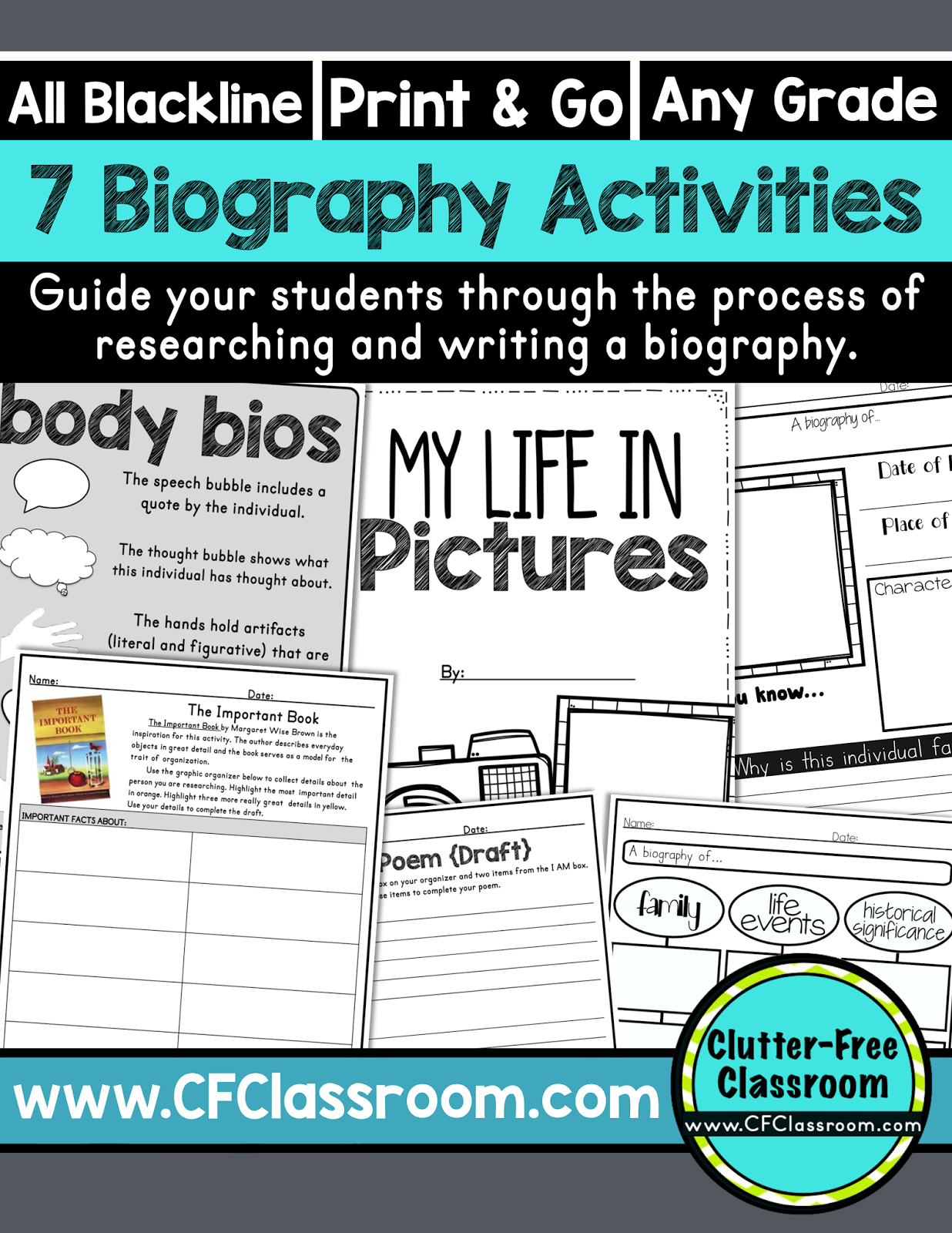
What is included in this resource?
This biography activities resource includes 7 activities. Learn about them below!
1. Biography Poster
Students gather information about any individual and use their research to create an 8.5 x 11 inch poster. The poster has spaces to record the person’s name, date of birth, place of birth, interesting facts, reasons of importance and character traits. They then draw a portrait of their individual.
2. My Life in Pictures: A Scrapbook Biography Project
To complete this biography, activity the student will take on the role of the individual they are studying. The student can either draw illustrations or print and attach photos highlighting important parts of the individual’s life. The student then writes captions. This biography report is so much more fun than writing an essay and more pages can be added as enrichment.
3. Top-Down Topic Web
This graphic organizer shows the relationships to the main idea and details. They represent main ideas in a hierarchy. These research-based tools help the students to comprehend what they have read because it organizes ideas in a systematic, visual graph.
4. The Important Book Biography Activity
The Important Book is a great book for teaching students about writing patterns. This activity was modeled after the format of that book and was designed to encourage students to identify key, important facts about the person they are studying. It makes a great bulletin board display.
5. Body Biography
A Body Biography project is a combination of artwork and writing. The packet includes a poster to use as directions or to display with the students’ completed biography projects. They complete sections such as a speech bubble with a quote by the individual, a thought bubble to show what they have thought about, shoes labeled with places the person has been, a heart filled with character traits. They then draw objects in the hands that relate to the person and create a background that tells the viewer more about the historical figure.
6. Timeline Biography Report
Unlike a lengthy written report, this is a creative way to showcase important events in the person’s life. Students identify key moments and tell about them in words and pictures. They are added to a foldable accordion booklet in sequential order.
7. I AM Poem
An I AM Poem is typically completed as an autobiography. I also have my students do one about themselves to learn more about them. The format is also great for showing what they know about a person they have learned about. The students take on the role of that person to write the poem in the first person.
- These biographies activities are high-interest for students, so they’ll be motivated to learn through reading and researching.
- This comprehensive resource includes differentiated materials, so all you will be able to meet all of your students’ needs and your students will feel successful.
- Your principal, colleagues and school librarian will be impressed by the creative methods of sharing learned information and the integrated learning that takes place.
- The resources can be used with an biography study and be used over and over again.
How to Implement it in Your Classroom
It’s part of our social studies curriculum and technically it is a study of Massachusetts Biographies, but we began learning about the genre with a mini-study of Martin Luther King Jr.
I read several picture books and the students buddy read a free printable reader from A to Z.
We created a top-down web listing information that we learned about MLK.
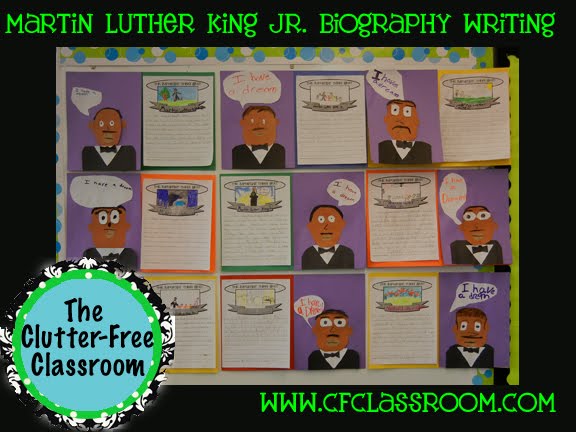
Then I read The Important Book by Margaret Wise Brown, and the students completed an activity I created for my biography packet that was inspired by the book. They used the same format as Brown’s book to compose their own version, “The important thing about Martin Luther King Jr. is…”
Finally, each of my friends made a portrait of MLK using the directions from TLC. They came out crazy cute. I hung each of them up even though I’ll probably take them down and send them home soon. They were just too adorable not to display.
Today, we did another activity (The I Am Poem) from the biography activities packet and a craftivity to go with it. I really feel like I am able to get to know my students on a completely different level through projects like these. They really open up and share such sweet ideas and insight into who they are.
3. Biography Picture Books
Belo are 4 high-quality biography children’s books for elementary students.
1. Martin’s Big Words by Doreen Rappaport
Martin’s Big Words by Doreen Rappaport is a nonfiction picture book that teaches children about the life and dream of Dr. Martin Luther King Jr. Students will learn what life was like for Martin growing up and how he became a leader in the fight for equal rights.
Throughout the book, the author includes actual quotes from Martin Luther King Jr. This book explains how Martin Luther King Jr. encouraged people to use their words to make change and the impact he had on the country. This story follows Martin all the way from childhood through the end of his life.
I liked this book so much I added it to my Starts With a Story collection! Grab these Martin’s Big Words activities to deliver a highly engaging and purposeful interactive read aloud!
2. The Story of Ruby Bridges by Robert Coles
The Story of Ruby Bridges details the struggles that six-year old Ruby Bridges endured when she was chosen to attend an all-white, segregated school as a black girl.
All of the other students’ parents pulled their children out of school because of her, and so she was forced to attend class all alone. She was escorted by U.S. Marshalls every morning, as she had to listen to jeers and insults being thrown at her while she was entering the school.
Despite these hardships, Ruby’s courage through non-violent actions did so much for the civil rights movement, and later that year, two white boys started to attend school with her. This inspirational true story teaches children that, no matter what age you are, anyone can be a trailblazer for change.
I liked this book so much I will be adding it to my Starts With a Story collection! Grab these The Story of Ruby Bridges activities to deliver a highly engaging and purposeful interactive read aloud!
3. The Girl Who Thought in Pictures: The Story of Temple Grandin by Julia Finley Mosca
The story The Girl Who Thought in Pictures follows the life of Temple Grandin. The story starts off with Temple being born, and the doctors thinking that she needed to be sent away because she was different. Temple liked to watch things spin, did not like loud noises or crowds, anything that was itchy, or big squeezy hugs. She also did not talk until she was three. Temple got diagnosed with Autism. Her mom said that Temple was “different, not less.”
When Temple goes to school, the children there would tease her relentlessly. One day, Temple’s mom thinks that it would be better for Temple to stay on her aunt’s ranch. There, Temple finally feels comfortable and explores ways to help animals. Temple goes to college and gets three degrees! Now she travels the world giving speeches and spreading hope. She spreads the message that the world needs brains of all kinds.
I liked this book so much I added it to my Starts With a Story collection! Grab these The Girl Who Thought in Pictures activities to deliver a highly engaging and purposeful interactive read aloud!
4. Planting Stories: The Life of Librarian and Storyteller Pura Belpre by Anika Denise
The sixth picture book on the list of books that are great for teaching biographies is Planting Stories . It is a biographical picture book about Pura Belpre, who was the first Puerto Rican Librarian in New York City. When she started working the library, she realized that there weren’t any of the stories and folktales that she was familiar with in Puerto Rico. She decides to share her stories during story hour and through puppet shows, and eventually publishes a book.
Pura travels across the country and from classroom to classroom planting her story seeds and educating about her homeland. When she returns to the library, she sees that her story seeds have bloomed and everyone is telling her stories. Students will love learning about Pura and how she shared her stories with children everywhere.
I liked this book so much I added it to my Starts With a Story collection! Grab these Planting Stories activities to deliver a highly engaging and purposeful interactive read aloud!
You might also like...

Solar Eclipse Activities for Elementary Students – 2025
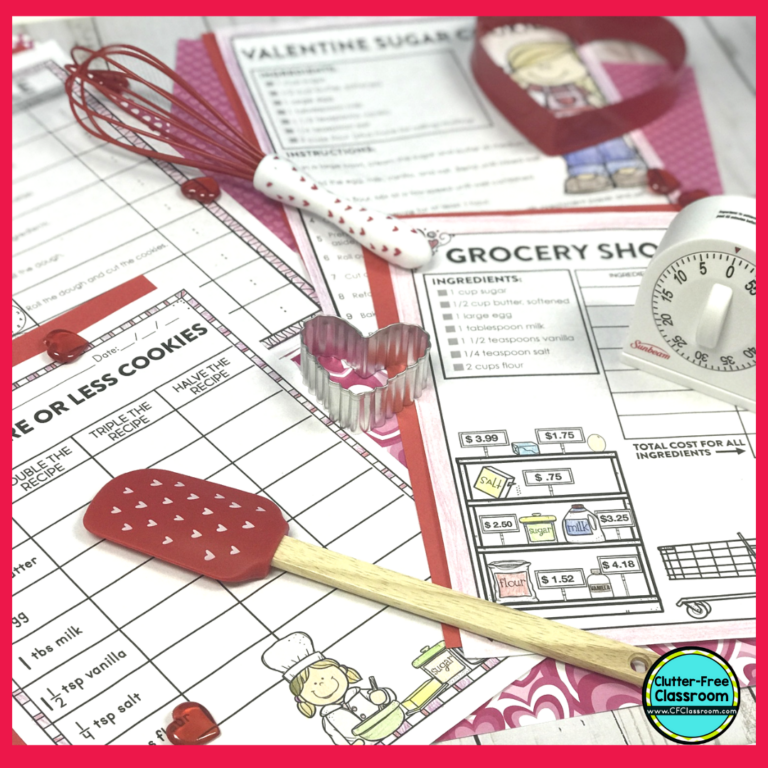
Project Based Learning Activities for Elementary Students
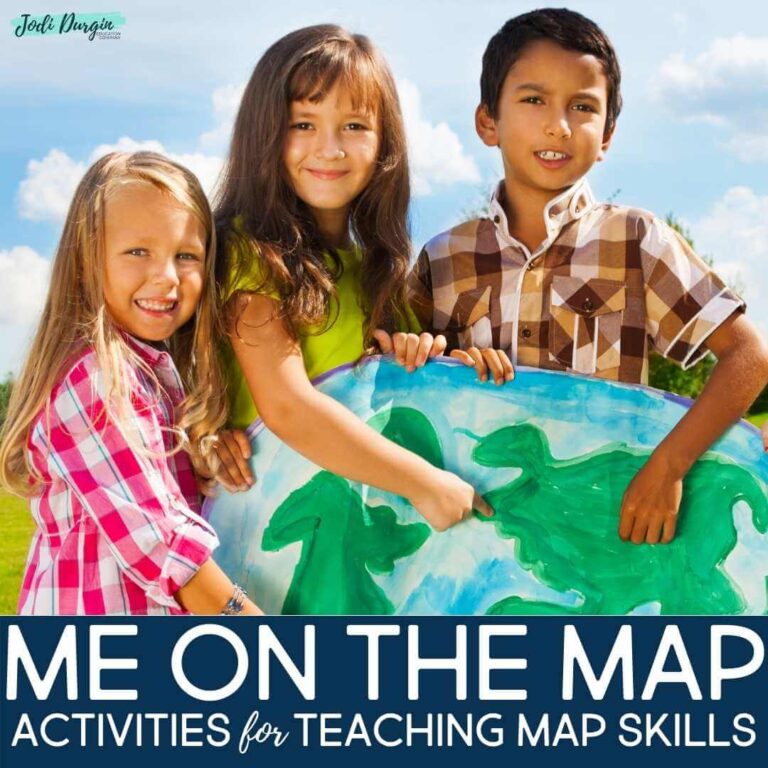
Me on the Map Activities and Printables for Elementary Teachers – 2025
Join the email club.
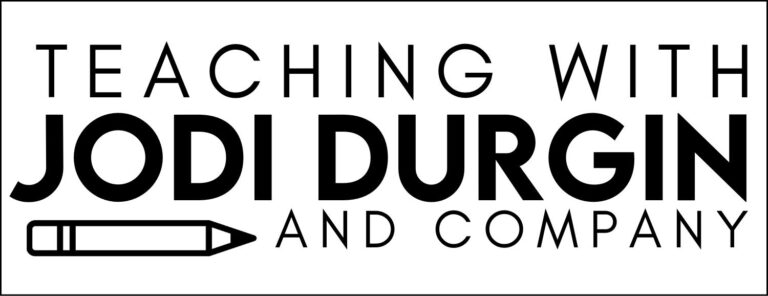
- CLUTTER-FREE TEACHER CLUB
- FACEBOOK GROUPS
- EMAIL COMMUNITY
- OUR TEACHER STORE
- ALL-ACCESS MEMBERSHIPS
- OUR TPT SHOP
- JODI & COMPANY
- TERMS OF USE
- Privacy Policy

- Share on Facebook
- Tweet This Resource
- Pin This Resource

How to Write a Biography
This how to write a biography lesson plan also includes:.
- Join to access all included materials
Looking for a great activity on how to write a biography? Here, middle schoolers draw from magazine articles, novels, historical figures, and current events to choose a person, or character to write about in a biography. They follow a specific list of procedures that take them through the pre-writing process all the way through the final draft. The student worksheets embedded in the plan are of particularly good value, and should help each of your writers stay on track and produce excellent results.
Start Your Free Trial
Save time and discover engaging curriculum for your classroom. Reviewed and rated by trusted, credentialed teachers.
- Collection Types
- Activities & Projects
- Assessments
- Graphics & Images
- Handouts & References
- Interactives
- Lab Resources
- Learning Games
- Lesson Plans
- Presentations
- Primary Sources
- Printables & Templates
- Professional Documents
- Study Guides
- Instructional Videos
- Performance Tasks
- Graphic Organizers
- Writing Prompts
- Constructed Response Items
- AP Test Preps
- Lesson Planet Articles
- Online Courses
- Interactive Whiteboards
- Home Letters
- Unknown Types
- Stock Footages
- All Resource Types
See similar resources:
Shakespeare and poe teach six-trait writing, writing portfolio: an autobiography assignment, organizing writing/composing a first draft, writing connections: link writing to pupils' daily lives, how to write a haiku, draft dilemmas, writing pattern books, reading and writing skills activities, writing prompts, student rubrics, and sample responses, use the polar express to develop rich and detailed writing.

COMMENTS
Sep 25, 2022 · Step 1: Read a Biography. The first step for students before writing a biography is to read one. They need to see a real-life example before tackling their own biography assignment. Elementary students can read biography picture books or Who Was? biography novels. Biography picture books are especially interesting to students as the splendid ...
you want to use, you can write the main body of your biography. As you write your biography, tick the openers when you use them. On your planning sheet, you can write down any WOW words and connectives you aim to use in your biography. (15 minutes and we will Peer Assess) Now swap with your shoulder partner. Tick their
Feb 8, 2024 · Write a good beginning. A good beginning of a biography includes who the biography is about and why the person is important. This should appear in the very first sentence of the biography. Have students practice writing first sentences of biographies with two pieces of information: a name and why the person is important. Organize a biography.
Jul 23, 2021 · BIOGRAPHY WRITING Tip #3: Find Your Themes In Biography Writing. Though predominantly a nonfiction genre, the story still plays a significant role in good biography writing. The skills of characterization and plot structuring are transferable here. And, just like in fiction, exploring themes in a biographical work helps connect the personal to ...
-Students will make corrections to their work and create a title for it. -Exit Slip: Day 4 Day 5-Students will complete a draft of the “Friends” worksheet. -When they finish, students will partner up with another student and peer review each other’s work. -Students will make corrections and put their ideas into paragraph form. -Exit Slip ...
Feb 20, 2020 · They are specifically high-interest people to start gaining traction with the project before we begin. The first people I grabbed this year were Serena Williams, Bethany Hamilton, Helen Keller, and Nina Simone. We take notes on paragraph writing, watch video clips, hear audio clips, and then practice writing a biographical paragraph together.
Jun 4, 2020 · This presentation focuses on how to write a biography text. It is aimed at Year 6 students studying the Cambridge curriculum. It is specifically for those st...
A collection of resources to use when teaching your students about the biography text type. Resources include planning templates, checklists, writing...
Third graders make me laugh. 2. Biography Activities for Elementary Students. These biography activities are great resources for teaching biographies to elementary students. It provides teachers with no prep printable biography activities that can be used over and over when studying any person.
This How to Write a Biography Lesson Plan is suitable for 6th - 8th Grade. Looking for a great lesson on how to write a biography? Here, middle schoolers draw from magazine articles, novels, historical figures, and current events to choose a person, or character to write about in a biography. They follow a specific list of procedures that take them through the pre-writing process all the way ...